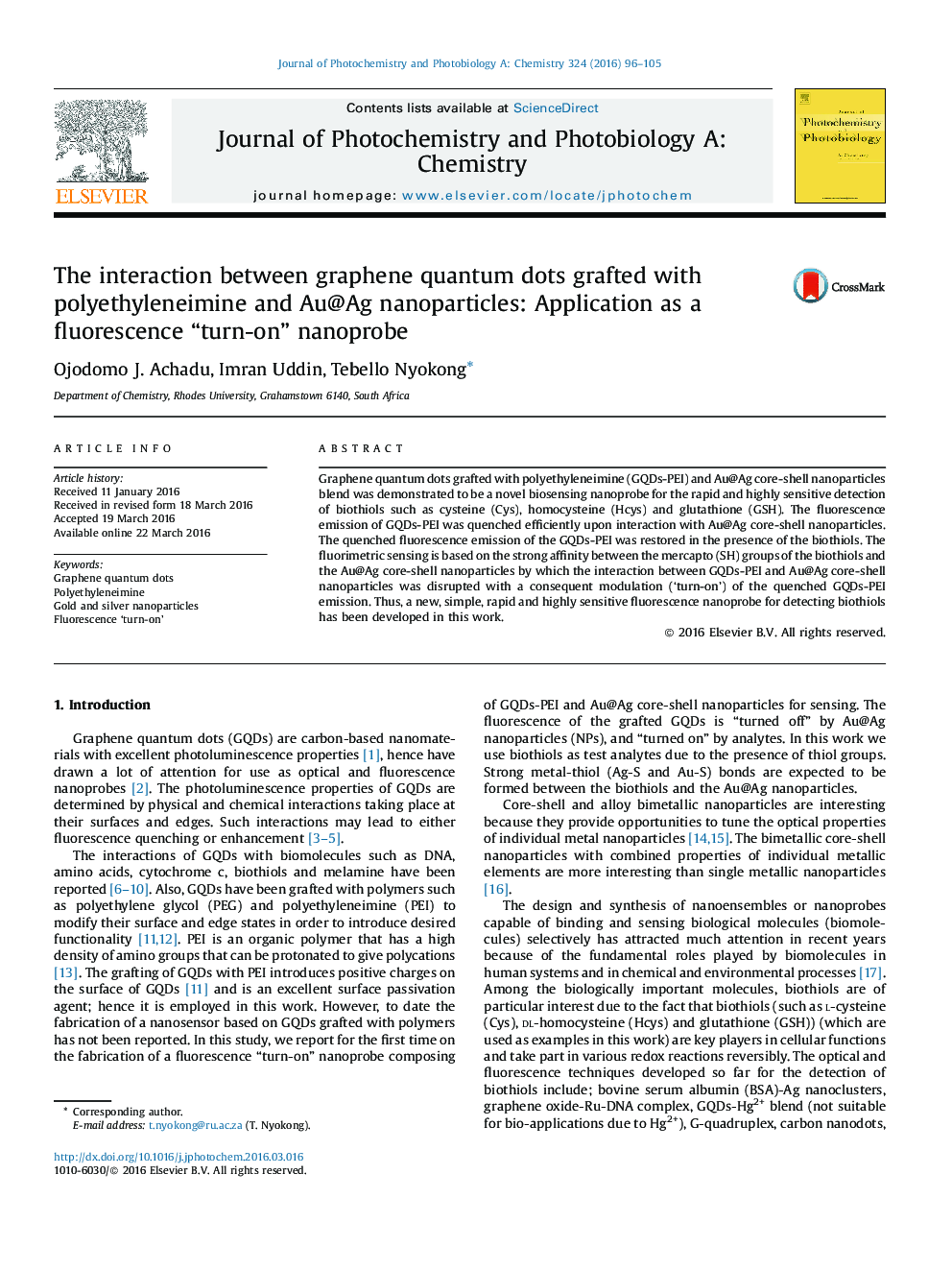| Article ID | Journal | Published Year | Pages | File Type |
|---|---|---|---|---|
| 26059 | Journal of Photochemistry and Photobiology A: Chemistry | 2016 | 10 Pages |
•The fluorescence of graphene quantum dots grafted with polyethyleneimine was turned off by Au@Ag nanoparticles.•The fluorescence was turned on by biothiols, hence allowing for their detection.•A selective nanosensor was developed with no interferences from a selection of proteins and amino acids.
Graphene quantum dots grafted with polyethyleneimine (GQDs-PEI) and Au@Ag core-shell nanoparticles blend was demonstrated to be a novel biosensing nanoprobe for the rapid and highly sensitive detection of biothiols such as cysteine (Cys), homocysteine (Hcys) and glutathione (GSH). The fluorescence emission of GQDs-PEI was quenched efficiently upon interaction with Au@Ag core-shell nanoparticles. The quenched fluorescence emission of the GQDs-PEI was restored in the presence of the biothiols. The fluorimetric sensing is based on the strong affinity between the mercapto (SH) groups of the biothiols and the Au@Ag core-shell nanoparticles by which the interaction between GQDs-PEI and Au@Ag core-shell nanoparticles was disrupted with a consequent modulation (‘turn-on’) of the quenched GQDs-PEI emission. Thus, a new, simple, rapid and highly sensitive fluorescence nanoprobe for detecting biothiols has been developed in this work.
Graphical abstractThe fluorescence emission of graphene quantum dots (GQDs) grafted with polyethyleneimine (PEI) was “turned off” upon interaction with Au@Ag nanoparticles, and was “turned-on” in the presence of biothiols, resulting in a sensitive and selective fluorescence nanoprobe.Figure optionsDownload full-size imageDownload as PowerPoint slide
